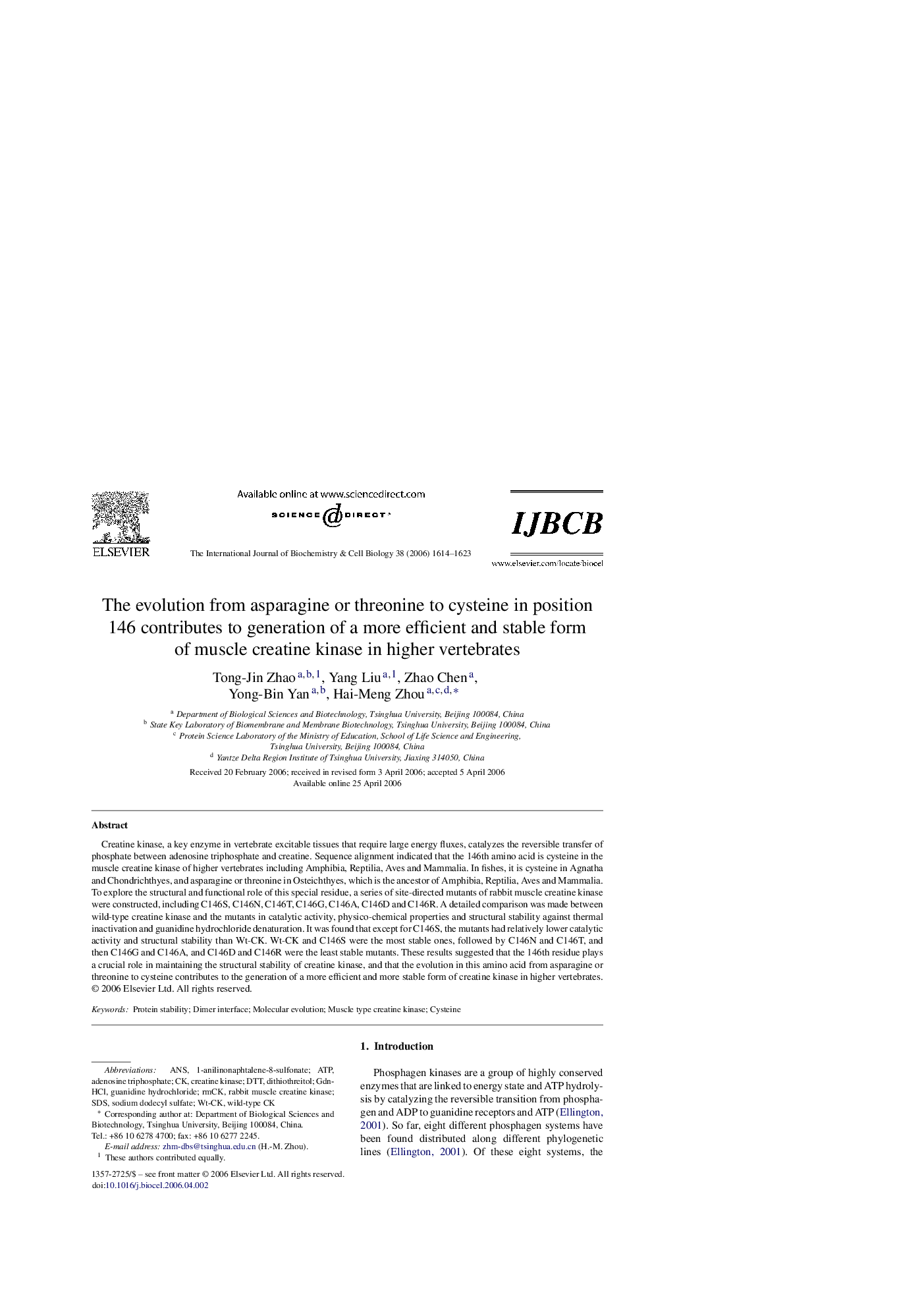| Article ID | Journal | Published Year | Pages | File Type |
|---|---|---|---|---|
| 1985437 | The International Journal of Biochemistry & Cell Biology | 2006 | 10 Pages |
Abstract
Creatine kinase, a key enzyme in vertebrate excitable tissues that require large energy fluxes, catalyzes the reversible transfer of phosphate between adenosine triphosphate and creatine. Sequence alignment indicated that the 146th amino acid is cysteine in the muscle creatine kinase of higher vertebrates including Amphibia, Reptilia, Aves and Mammalia. In fishes, it is cysteine in Agnatha and Chondrichthyes, and asparagine or threonine in Osteichthyes, which is the ancestor of Amphibia, Reptilia, Aves and Mammalia. To explore the structural and functional role of this special residue, a series of site-directed mutants of rabbit muscle creatine kinase were constructed, including C146S, C146N, C146T, C146G, C146A, C146D and C146R. A detailed comparison was made between wild-type creatine kinase and the mutants in catalytic activity, physico-chemical properties and structural stability against thermal inactivation and guanidine hydrochloride denaturation. It was found that except for C146S, the mutants had relatively lower catalytic activity and structural stability than Wt-CK. Wt-CK and C146S were the most stable ones, followed by C146N and C146T, and then C146G and C146A, and C146D and C146R were the least stable mutants. These results suggested that the 146th residue plays a crucial role in maintaining the structural stability of creatine kinase, and that the evolution in this amino acid from asparagine or threonine to cysteine contributes to the generation of a more efficient and more stable form of creatine kinase in higher vertebrates.
Keywords
Related Topics
Life Sciences
Biochemistry, Genetics and Molecular Biology
Biochemistry
Authors
Tong-Jin Zhao, Yang Liu, Zhao Chen, Yong-Bin Yan, Hai-Meng Zhou,
